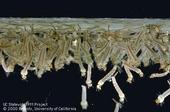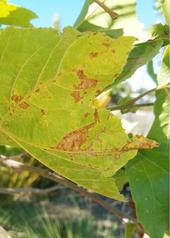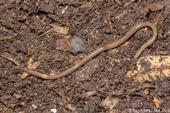- Author: Andrew Sutherland

Many gardeners have fountains, ponds, and other water features in their landscapes. Water gardens are beautiful and calming, but, if not managed properly, can add an unpleasant element to the landscape—mosquitoes. How can you prevent mosquito infestations?
How do mosquitoes develop?
First, it is important to understand mosquito biology. Mosquitoes are small flies that lay their eggs in, on, or near stagnant water. The larvae, or wigglers that hatch from the eggs live in water and feed on organic debris until they transform into a motile pupa, or tumbler, and finally into the familiar adults. This process, from egg to adult, requires as little as one week when conditions are favorable. Emerging females...
- Author: Belinda Messenger-Sikes

Have you been seeing a lot of defoliated sycamore trees recently? Sparse foliage and early leaf drop on sycamore trees might be due to anthracnose. The cool, wet spring in many parts of California provided the perfect conditions for this disease. Anthracnose is a common fungal disease sometimes called leaf, shoot, or twig blight. It can cause twisted, distorted branches in American sycamore, some varieties of London plane trees, and California sycamore trees. Sycamore anthracnose is primarily an aesthetic concern since it usually doesn't kill established trees.
Symptoms
Take a close look at the fallen leaves for the characteristic irregular blotches caused by this disease. Anthracnose can...
- Author: Belinda J. Messenger-Sikes

What is that weird wormlike thing in your garden? A slug? An earthworm? It may be neither—it it might be a land planarian. Land planaria are also called terrestrial flatworms and hammerhead worms. They are often colorful, such as the blue garden flatworm (Caenoplana coerulea) or patterned with stripes, like the shovel-headed garden worm (Bipalium kewense).
Land planaria are generalist predators of earthworms, slugs, and other mollusks. They capture prey by wrapping their bodies around it and engulfing the prey with mucous. Planaria mouths are not at the end of their body like most animals, but on the underside near the middle of their body. Unlike slugs, land planaria do not have tentacles (such...
- Author: Belinda J. Messenger-Sikes

The jumping worm, Amynthas agrestis, is an invasive earthworm capable of harming native forests that has been recently reported in some areas of California. This pest devours leaf litter and other organic matter, changing soil texture and nutrient availability to a point where some plants may be unable to survive. Its feeding can lead to a decline in diversity and population of native plants and other organisms within forests.
Although these worms are native to eastern Asia, they have been detected in dozens of states; including Massachusetts, New York, Wisconsin, and Minnesota. Jumping worms have since moved west to Washington...

UC IPM's Urban & Community program has a new newsletter! The Home & Garden Pest Newsletter (which replaces the Retail Nursery & Garden Center IPM News) is designed to help provide California residents with the latest pest information from the University of California. The newsletter has a completely new design and is ADA accessible for print and online viewing. Our first issue is now available and you can


